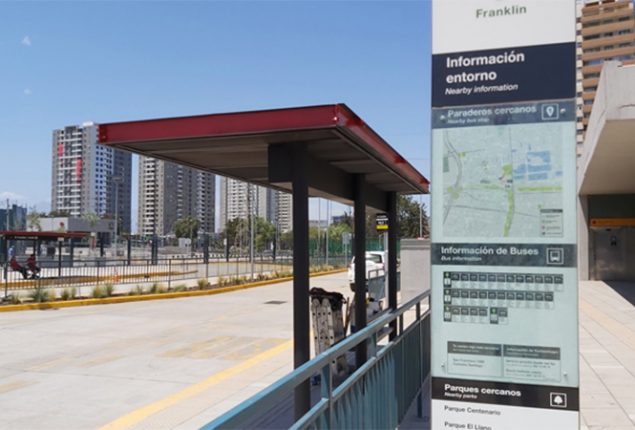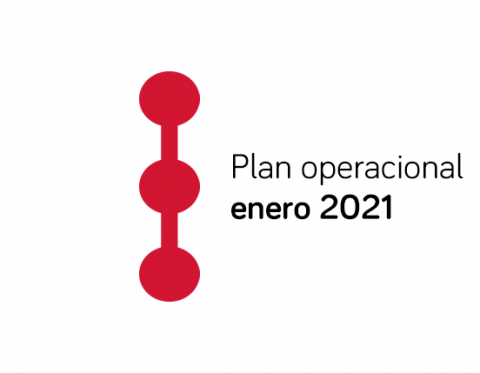New Intermodal Station opens in Franklin

The new infrastructure, which begins operating on Wednesday, February 12, will allow users to transfer between Lines 2 and 6 of Santiago Metro, and six public transport routes on the surface. According to the Strategic Plan of Intermodality, there are more than 30 points in the capital where transfers can be generated between modes of transport, generating more pleasant and efficient trips for users.
As of this Wednesday, February 12, users of the D05 – D07 – E04 – H12 – H14 and H06 tours will benefit from the new modal exchange station Franklin, which will also allow them to combine with lines 2 and 6 of subway.
“This new intermodal station is located between Placer, Nathaniel Cox and Centenario streets, in the commune of Santiago, with an extension of 3,600 m2.”
This station has a weekly influx of more than 100 thousand people and the connection with the six bus routes will mainly benefit those who have as their destination the communes of Santiago, San Miguel, Auñoa, Macul, San Joaquín, Peñalolén, La Florida, Puente Alto, San Bernardo, Pedro Aguirre Cerda and Lo Espejo.
More than 39% of trips in the Metropolitan Region are made in more than one stage. For this reason, the Ministry of Transport and Telecommunications established a working table led by SECTRA, involving all transport agencies and city planning.
In this way, the Strategic Plan of Intermodality was presented, which considers the construction of modal exchange points in different points of the Metropolitan Region. The objective of this plan is to improve the experience of transfers between modes, generating more pleasant and efficient trips for all users of the transport system.
“This plan considers the installation of more than 30 modal exchange points in the medium term, thus generating an infrastructure that connects the main roads of the city with mass public transport in different parts of the city, promoting the development of new development poles also in rural areas of the Region”
The points were prioritized according to the following guidelines and include the following types of exchangers:
With property (EIM):
- Modal Exchange Station rural area: It includes properties located in rural or communal sectors over 50 thousand inhabitants, external to the province of Santiago. Modal exchange is mainly rural in nature, although the exchanger can also serve, to a lesser extent, urban and intercity travel. The areas that could receive this model of intermodals are Buin, Paine, San Bernardo (combination with MetroTren a Nos), Lampa, Nos, Colina, Padre Hurtado, Melipilla, Peñaflor and Talagante.
- Intermediate Zone Modal Exchange Station: It comprises properties located outside the central ring formed by the Departmental Cord – Las Rejas – Dorsal – Los Leones. This type of intermodal could be located in the areas of Puente Alto, Lo Prado, Las Condes, San Bernardo, Pedro Aguirre Cerda and Maipú.
- Modal Exchange Station central area: It includes properties located in the center of Santiago. These exchangers do not include intercity buses, looking to decongest the city center. The communes that could receive this type of intermodals are Santiago, Providencia, Estación Central and Cerro Navia.
No property (ZIM):
- Modal Interchange Zones (ZIM): It comprises spaces on public roads where modal exchange is associated with urban bus and subway. These points could be located in Providencia, Maipú, Macul, Auñoa, La Granja, Santiago, Las Condes, Quilicura and Cerrillos.



